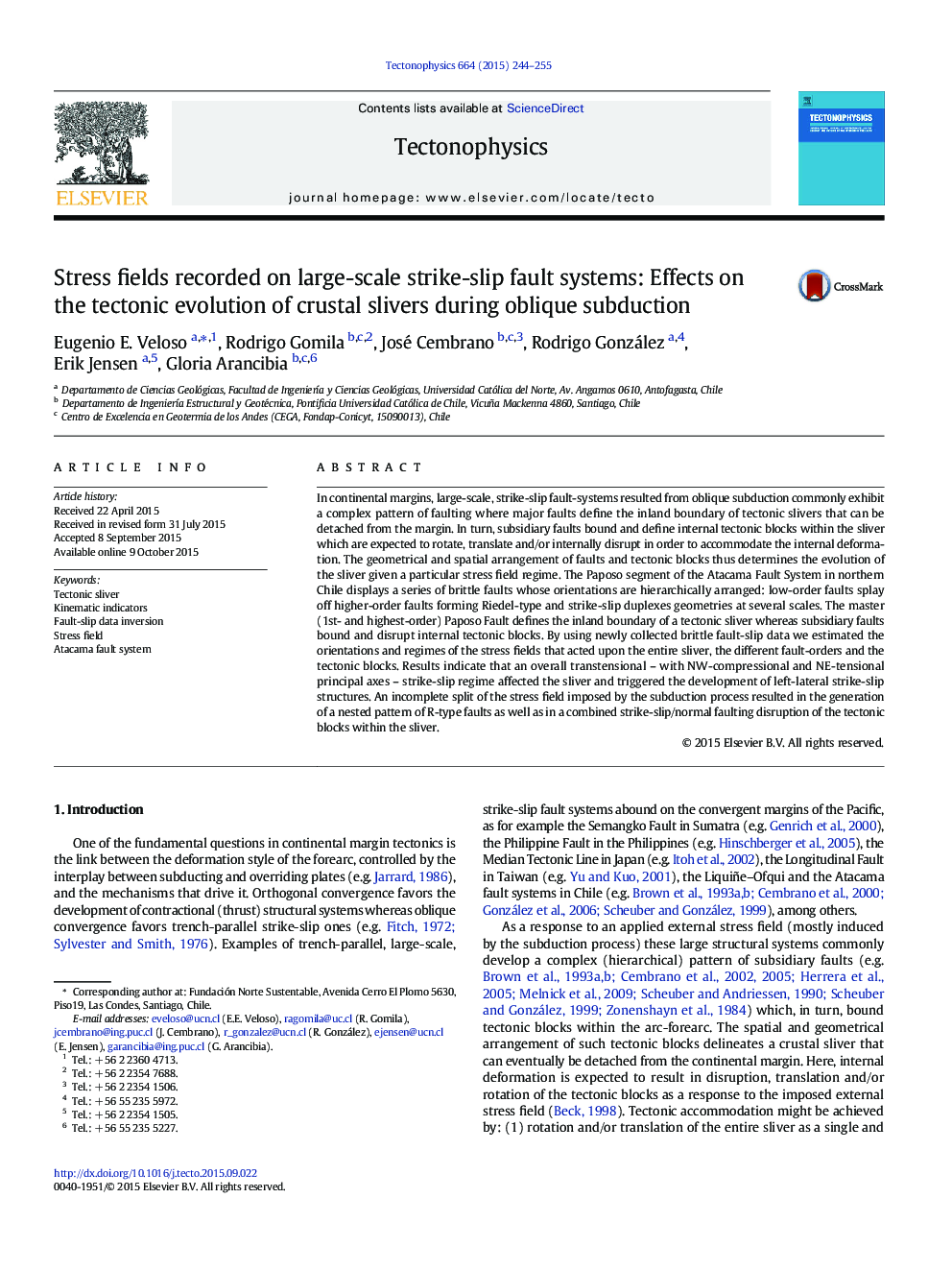| Article ID | Journal | Published Year | Pages | File Type |
|---|---|---|---|---|
| 6433609 | Tectonophysics | 2015 | 12 Pages |
â¢External stress field split into tensional and strike-slip components as transferred to the sliver.â¢Tectonic blocks are defined by high-order (1st, 2nd and 3rd) faults.â¢Angular relations between faults results from interaction of far- and near-stress fields.â¢Structural evolution is similar to a transtensional duplex.
In continental margins, large-scale, strike-slip fault-systems resulted from oblique subduction commonly exhibit a complex pattern of faulting where major faults define the inland boundary of tectonic slivers that can be detached from the margin. In turn, subsidiary faults bound and define internal tectonic blocks within the sliver which are expected to rotate, translate and/or internally disrupt in order to accommodate the internal deformation. The geometrical and spatial arrangement of faults and tectonic blocks thus determines the evolution of the sliver given a particular stress field regime. The Paposo segment of the Atacama Fault System in northern Chile displays a series of brittle faults whose orientations are hierarchically arranged: low-order faults splay off higher-order faults forming Riedel-type and strike-slip duplexes geometries at several scales. The master (1st- and highest-order) Paposo Fault defines the inland boundary of a tectonic sliver whereas subsidiary faults bound and disrupt internal tectonic blocks. By using newly collected brittle fault-slip data we estimated the orientations and regimes of the stress fields that acted upon the entire sliver, the different fault-orders and the tectonic blocks. Results indicate that an overall transtensional - with NW-compressional and NE-tensional principal axes - strike-slip regime affected the sliver and triggered the development of left-lateral strike-slip structures. An incomplete split of the stress field imposed by the subduction process resulted in the generation of a nested pattern of R-type faults as well as in a combined strike-slip/normal faulting disruption of the tectonic blocks within the sliver.
